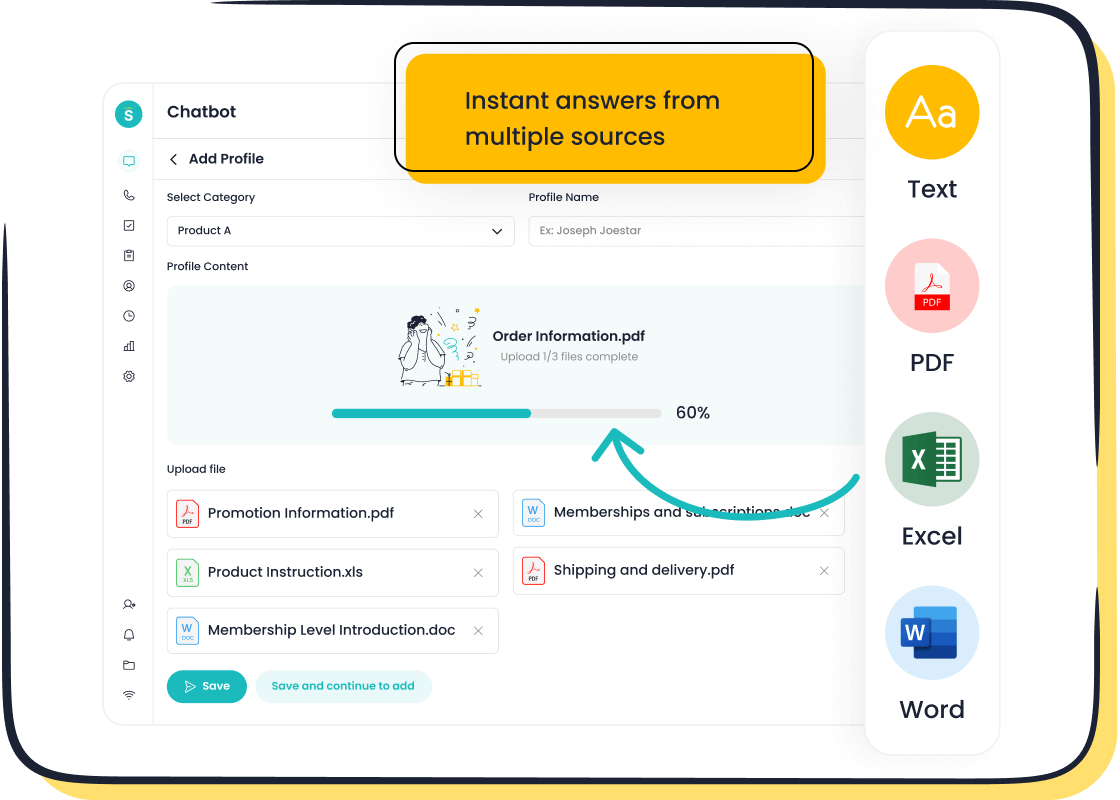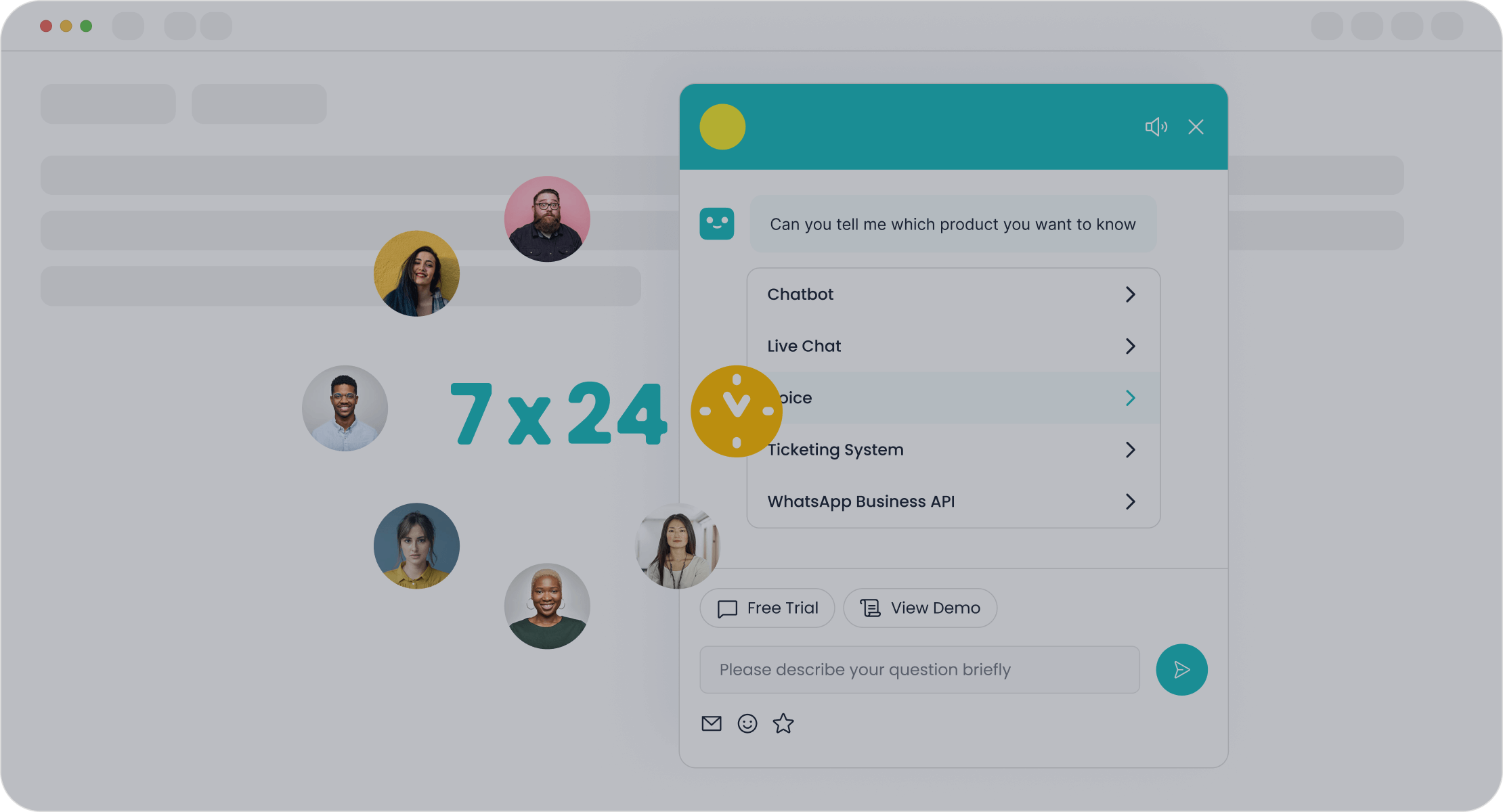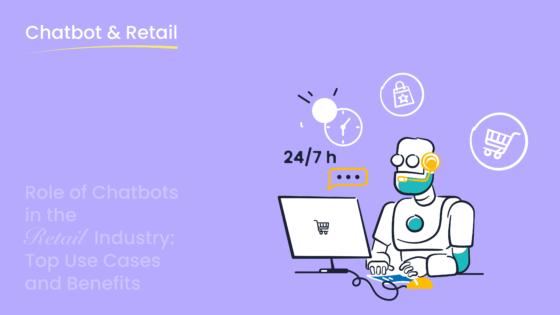FAQ Chatbot Trends and Innovations to Watch in 2025

The year 2025 signals a groundbreaking shift in how businesses approach customer service. AI-powered tools, like the FAQ chatbot, are becoming indispensable for delivering fast and efficient support. By 2025, the number of businesses using AI chatbots is expected to grow by 34%, with these tools answering up to 79% of routine questions. This evolution reflects a broader trend where 94% of people believe chatbots will eventually replace traditional call centers. Companies like Sobot are leading this transformation, offering intelligent solutions that enhance customer interactions while reducing operational costs.
A recent survey revealed that chatbot adoption surged by 92% between 2019 and 2020, underscoring their growing role in business communication.
As customer expectations rise, embracing these innovations ensures you stay competitive in a fast-paced market.
Hyper-Personalization: Redefining FAQ Chatbot Interactions
Understanding Hyper-Personalization in Chatbots
Definition and its role in customer service.
Hyper-personalization uses advanced AI to deliver tailored experiences by analyzing customer data, preferences, and behaviors. Unlike traditional chatbots that provide generic responses, hyper-personalized chatbots adapt to individual needs. This approach transforms customer service by making interactions more relevant and engaging. For example, a chatbot can recommend products based on your browsing history or offer solutions aligned with your past inquiries. This level of personalization fosters trust and enhances the overall experience.
How hyper-personalization differs from traditional approaches.
Traditional chatbots rely on pre-programmed scripts, often leading to repetitive and impersonal interactions. Hyper-personalization, on the other hand, leverages conversational AI to understand context and intent. It uses real-time data to craft responses that feel human-like. This shift ensures that every interaction aligns with your unique preferences, creating a seamless and satisfying experience.

Applications of Hyper-Personalization in Sobot Chatbot
Tailored responses using customer data and behavior analysis.
Sobot's AI-powered chatbots excel at delivering tailored responses. By analyzing customer data, such as purchase history and interaction patterns, they provide solutions that match individual needs. For instance, if you frequently inquire about a specific product, the chatbot can proactively share updates or promotions related to it. This capability not only saves time but also enhances engagement.
Proactive support to anticipate customer needs.
Sobot's chatbot goes beyond reactive support. It anticipates your needs by identifying patterns in your behavior. For example, if you often ask about delivery times, the chatbot might notify you about shipping updates before you even ask. This proactive approach ensures timely assistance and builds a stronger connection with customers.
Business Benefits of Hyper-Personalized FAQ Chatbots
Enhanced customer loyalty and satisfaction.
Hyper-personalized chatbots create meaningful connections by aligning services with individual preferences. Companies using AI-powered personalization report higher customer engagement and satisfaction. Quick, accurate, and contextually relevant responses reduce frustration and build trust. This leads to stronger loyalty and repeat business.
Improved efficiency in resolving customer queries.
Hyper-personalization streamlines query resolution. Chatbots handle multiple inquiries simultaneously, reducing wait times. They continuously learn from interactions, improving their ability to assist you in the future. Businesses benefit from increased efficiency, as agents can focus on complex issues while chatbots manage routine tasks.
Companies adopting hyper-personalization see improved sales metrics and deeper customer relationships. Tailored experiences at every touchpoint ensure that your needs are met effectively.
Advancements in NLP: The Backbone of Conversational AI
The Role of NLP in AI Chatbot Trends
Key components of NLP and their importance.
Natural Language Processing (NLP) is the foundation of conversational AI, enabling chatbots to interpret and respond to human language effectively. Key components of NLP include tokenization, sentiment analysis, and named entity recognition. Tokenization breaks down sentences into smaller parts for better understanding. Sentiment analysis identifies the emotional tone behind a message, while named entity recognition extracts critical information like names or dates. These components allow chatbots to process complex queries and deliver accurate responses. As a result, NLP ensures that your interactions with chatbots feel seamless and intuitive.
How NLP enables chatbots to understand user intent better.
NLP empowers chatbots to grasp the intent behind your queries rather than just focusing on keywords. For instance, if you ask, "Can I track my order?" the chatbot understands that you need shipping details. This capability stems from advanced algorithms that analyze context and user behavior. By interpreting intent, chatbots can provide precise answers, reducing the need for follow-up questions. This improvement aligns with growing customer expectations for quick and accurate support.
Innovations in NLP for 2025
Context-aware and emotion-sensitive conversations.
By 2025, NLP advancements will enable chatbots to engage in context-aware and emotion-sensitive conversations. Imagine a chatbot recognizing frustration in your tone and offering empathetic responses. This innovation transforms customer interactions by making them more human-like. Real-time sentiment analysis, a key feature, helps businesses understand customer feelings and tailor their approach. Voice assistants, for example, now detect emotions, enhancing personalized experiences. These trends highlight how NLP is reshaping conversational AI.
Multilingual capabilities for global customer support.
Multilingual NLP is revolutionizing global customer support by allowing chatbots to communicate in multiple languages. This feature ensures that you receive assistance in your preferred language, leading to faster issue resolution. Companies adopting multilingual NLP report reduced response times and higher satisfaction rates. For instance, Sobot's AI-powered chatbots excel in multilingual support, making them ideal for businesses with diverse customer bases. This capability not only improves efficiency but also strengthens customer relationships worldwide.

Sobot Chatbot’s NLP Capabilities
Real-time query resolution with natural interactions.
Sobot's chatbot leverages NLP to deliver real-time query resolution. It uses advanced algorithms to interpret your questions and provide accurate answers instantly. Over two years, Sobot's platform reduced inbound discussion volume by 20% while achieving an 80% accuracy rate in responses. This efficiency ensures that your queries are resolved quickly, enhancing your overall experience. Businesses also benefit from reduced operational costs and improved customer satisfaction.
Enhanced user experience through intelligent responses.
Sobot's chatbot enhances user experience by offering intelligent, context-aware responses. It adapts to your needs, ensuring that every interaction feels personalized. Metrics like self-service rates and satisfaction scores highlight its effectiveness. For example, more than 95% of customers reported satisfaction with Sobot's chatbot. These capabilities demonstrate how NLP-driven chatbots meet modern expectations for human-like interactions and seamless support.
Voice-Enabled FAQ Chatbots: The Future of Conversational AI
Why Voice Technology is a Game-Changer
The growing demand for voice assistants in customer service.
Voice technology is transforming customer service by offering faster and more intuitive interactions. The conversational AI market is projected to grow from USD 13.2 billion in 2024 to USD 49.9 billion by 2030, driven by advancements in voice recognition. This growth reflects the increasing demand for voice-enabled FAQ chatbots, which simplify communication and improve efficiency. Businesses adopting this technology can handle more inquiries while providing a seamless experience. For example, voice assistants like Amazon's Alexa have revolutionized customer engagement by enabling voice-based shopping and support.
Accessibility and convenience of voice-enabled chatbots.
Voice-enabled chatbots provide unmatched convenience. They allow you to interact hands-free, making them ideal for multitasking or on-the-go situations. These chatbots also enhance accessibility for individuals with disabilities, ensuring everyone can access customer support effortlessly. With AI-powered chatbots becoming more intuitive, you can expect faster resolutions and a more personalized experience.

Features of Voice-Enabled Sobot Chatbot
Real-time voice recognition and seamless integration.
Sobot's voice-enabled chatbot uses advanced real-time voice recognition to understand and respond to your queries instantly. It integrates seamlessly with various platforms, ensuring a consistent experience across channels. This feature allows businesses to streamline operations and improve customer satisfaction. By leveraging conversational AI, Sobot ensures that your interactions feel natural and efficient.
Hands-free support for diverse customer needs.
Sobot's chatbot offers hands-free support, catering to a wide range of customer needs. Whether you're driving, cooking, or managing other tasks, you can rely on its voice capabilities to provide assistance. This functionality not only enhances convenience but also ensures that you receive timely support without interruptions.
Use Cases in Customer Support
Enhancing accessibility for users with disabilities.
Voice-enabled chatbots play a crucial role in making customer support more inclusive. They allow users with visual impairments or mobility challenges to access services effortlessly. By eliminating the need for typing, these chatbots ensure that everyone can interact with businesses on equal terms.
Providing on-the-go support for busy customers.
Busy schedules often leave little time for traditional customer service interactions. Voice-enabled chatbots address this challenge by offering quick, on-the-go support. Whether you're commuting or multitasking, these chatbots provide instant answers, saving you time and effort. This capability highlights why voice technology is a key trend in 2025.
A study shows that 74% of customers prefer chatbots for simple queries, emphasizing the growing reliance on AI-powered solutions for efficient support.
Integration with Business Applications: Unlocking New Possibilities
The Importance of Seamless Integration
How FAQ chatbots enhance CRM and ERP systems.
FAQ chatbots play a pivotal role in enhancing CRM and ERP systems by automating routine tasks and improving data management. For instance, chatbots can update customer records in real-time, ensuring your CRM system reflects the latest interactions. They also retrieve data from ERP systems instantly, providing you with accurate information without manual effort. This integration streamlines processes like inventory management and customer support, enabling businesses to operate more efficiently. A chatbot integrated with CRM can personalize responses by accessing customer data, creating a more engaging experience.
Streamlining workflows and improving data accessibility.
Chatbot integration simplifies workflows by automating repetitive tasks and reducing human errors. For example, chatbots can handle HR-related queries, saving time for employees to focus on strategic activities. They also improve data accessibility by centralizing information from multiple systems. A case study from Unilever shows how their chatbot, Una, streamlined HR processes in 32 languages, eliminating the need for separate systems. This approach enhances operational efficiency and ensures you can access critical data when needed.

Sobot Chatbot’s Integration Capabilities
Use in e-commerce for order tracking and customer inquiries.
Sobot's chatbot excels in e-commerce by providing instant support for order tracking and inquiries. It sends real-time notifications about order status, including confirmations and shipping updates. This feature improves response times and enhances the shopping experience. For example, if you need to cancel an order, the chatbot can handle the request instantly, saving you time. These capabilities make Sobot an ideal solution for businesses aiming to streamline customer interactions and boost satisfaction.
Applications in healthcare for appointment scheduling and FAQs.
In healthcare, Sobot's chatbot simplifies appointment scheduling and answers frequently asked questions. It integrates seamlessly with hospital systems, allowing patients to book appointments without delays. The chatbot also provides accurate information about services, reducing the workload on staff. For instance, it can guide you through insurance queries or direct you to the right department. These features improve accessibility and ensure patients receive timely support.
Future Trends in Chatbot Integration
AI-driven insights for better decision-making.
Modern chatbots analyze interactions to provide actionable insights, helping businesses make informed decisions. For example, they identify patterns in customer behavior, enabling you to optimize services. Companies using AI-driven chatbots report a 55% increase in high-quality leads. This trend highlights the growing importance of data-driven decision-making in enhancing operational efficiency.
Unified customer support across multiple platforms.
Future trends in chatbot integration focus on creating unified customer support systems. Chatbots will connect seamlessly with CRM, ERP, and marketing tools, ensuring consistent service across platforms. This approach reduces the need for human intervention and automates end-to-end processes. For example, chatbots will handle complex queries and lead generation autonomously, improving productivity. Businesses adopting these integrations will gain a competitive edge in delivering exceptional customer experiences.
The global chatbot market, valued at $5.4 billion, is projected to reach $15.5 billion by 2028, reflecting the growing demand for integrated solutions.
Ethical Considerations in FAQ Chatbot Development
Data Privacy and Security in Conversational AI

Ensuring compliance with global data protection standards
Data privacy remains a top concern as conversational AI becomes more prevalent. You might worry about how your personal information is handled, and rightly so. A 2023 study revealed that 75% of consumers globally express concerns about AI's risks, with 53% believing it complicates the protection of personal information. To address this, advanced chatbots like Sobot's adhere to strict global data protection standards. These include GDPR compliance in Europe and CCPA regulations in the United States. By implementing robust encryption and secure data storage, Sobot ensures your information stays safe. The global average cost of a data breach reached USD 4.45 million in 2023, underscoring the importance of these measures. Transparent practices build trust, making you feel confident about interacting with AI-powered systems.
Building trust through transparent data usage policies
Trust grows when you know how your data is used. Clear consent, detailed explanations, and the ability to access or delete your data are essential. For example, Sobot's chatbot informs you why data is collected and ensures you can manage your information easily. Strong security measures further protect your data. These practices align with compliance metrics like explicit consent and user data access, fostering confidence in AI-driven interactions.
| Compliance Metric | Description |
|---|---|
| Clear Consent | Users must provide explicit consent for data collection. |
| Data Collection Explanation | Users should be informed about the reasons for data collection. |
| User Data Access/Deletion | Users must have the ability to access and delete their data. |
| Data Security | Implement strong security measures to protect user data. |
Addressing Bias and Promoting Inclusivity
Identifying and mitigating algorithmic bias in chatbots
Algorithmic bias can lead to unfair outcomes. You might notice that some chatbots fail to provide equitable responses across diverse user groups. Research highlights best practices for mitigating bias, such as incorporating diverse perspectives during design and conducting regular audits. Sobot employs human oversight to complement automated decision-making, ensuring fairness in interactions. For example, its NLP capabilities analyze user intent without favoring specific demographics. Regular audits help identify and correct biases, creating a more inclusive experience for you.
| Best Practice | Description |
|---|---|
| Diversity in Design | Incorporating diverse perspectives to avoid discriminatory effects. |
| Regular Audits | Formal audits to check for bias in algorithms and improve decision-making. |
| Human Oversight | Moderators identify and correct biased outcomes, ensuring fairness. |
Ensuring fairness and inclusivity in customer interactions
Inclusivity means providing equal access to services for everyone. Sobot's advanced chatbots excel in multilingual support, allowing you to interact in your preferred language. This feature ensures fairness, especially for users from diverse backgrounds. By addressing algorithmic bias and promoting inclusivity, Sobot creates a chatbot experience that feels equitable and welcoming.
Responsible AI Practices for the Future
Balancing automation with human oversight
Automation enhances efficiency, but human oversight ensures ethical practices. You benefit from chatbots that combine AI-driven insights with real user interactions. For example, Sobot launches its chatbots with minimal content to gather feedback and improve performance. Metrics like comprehension level, self-service rate, and satisfaction rate measure success. Continuous monitoring ensures the chatbot evolves to meet your needs responsibly.
Ethical guidelines for deploying AI chatbots
Responsible deployment requires clear guidelines. Sobot prioritizes user satisfaction and engagement, focusing on qualitative KPIs to refine its chatbot. By balancing automation with human input, Sobot ensures its AI solutions align with ethical standards. This approach builds trust and delivers a seamless experience for you.
Continuous monitoring of user needs and satisfaction levels drives ethical AI practices, ensuring chatbots remain effective and fair.
The trends shaping FAQ chatbots in 2025, including hyper-personalization, advanced NLP, and voice technology, are revolutionizing customer service. These innovations enhance satisfaction by delivering faster, more accurate, and emotionally engaging interactions. For instance, hyper-personalization fosters long-term relationships, while NLP enables 24/7 support with seamless multilingual capabilities.
Sobot exemplifies these advancements. Its AI-powered chatbot integrates with business systems to streamline workflows and reduce costs. Companies like Deutsche Telekom have seen response times drop by 80%, while AI-driven solutions save up to 70% on support costs. With chatbots meeting the demand for instant responses, businesses can stay competitive and exceed customer expectations.
Customers increasingly prefer chatbots for their speed and efficiency, with 69% using them for instant query resolutions.
By adopting these technologies, you can improve satisfaction, cut costs, and thrive in a rapidly evolving market.
FAQ
What makes hyper-personalized interactions important for customer service?
Hyper-personalized interactions improve customer service by tailoring responses to individual preferences. For example, chatbots like Sobot analyze your behavior to offer relevant solutions. This approach enhances personalization, leading to better customer experience and stronger loyalty. Businesses using this strategy report a 20% increase in customer satisfaction.
How do chatbots enhance online shopping experiences?
Chatbots streamline online shopping experiences by providing instant support. They assist with product recommendations, order tracking, and FAQs. Sobot’s chatbot, for instance, uses AI to deliver real-time updates and personalized suggestions, ensuring a seamless shopping journey. This efficiency boosts customer satisfaction and sales.
Can chatbots improve customer experience in healthcare?
Yes, chatbots enhance customer experience in healthcare by simplifying appointment scheduling and answering FAQs. Sobot’s chatbot integrates with hospital systems to provide accurate information and timely support. This automation reduces staff workload and ensures patients receive efficient service.
How does enhanced personalization impact customer loyalty?
Enhanced personalization fosters loyalty by aligning services with your preferences. For instance, Sobot’s chatbot uses data to anticipate your needs, creating meaningful interactions. Studies show that 80% of customers prefer businesses offering personalized experiences, highlighting its importance in building trust and repeat business.
Why is multilingual support essential for global businesses?
Multilingual support ensures inclusivity and better service for diverse audiences. Sobot’s chatbot communicates in multiple languages, making it ideal for global businesses. This feature reduces response times and improves customer satisfaction, as users receive assistance in their preferred language.
See Also
10 Leading Websites Utilizing Chatbots This Year
10 Most Effective Chatbots For Websites This Year
Simple Ways To Integrate Chatbot Examples On Websites